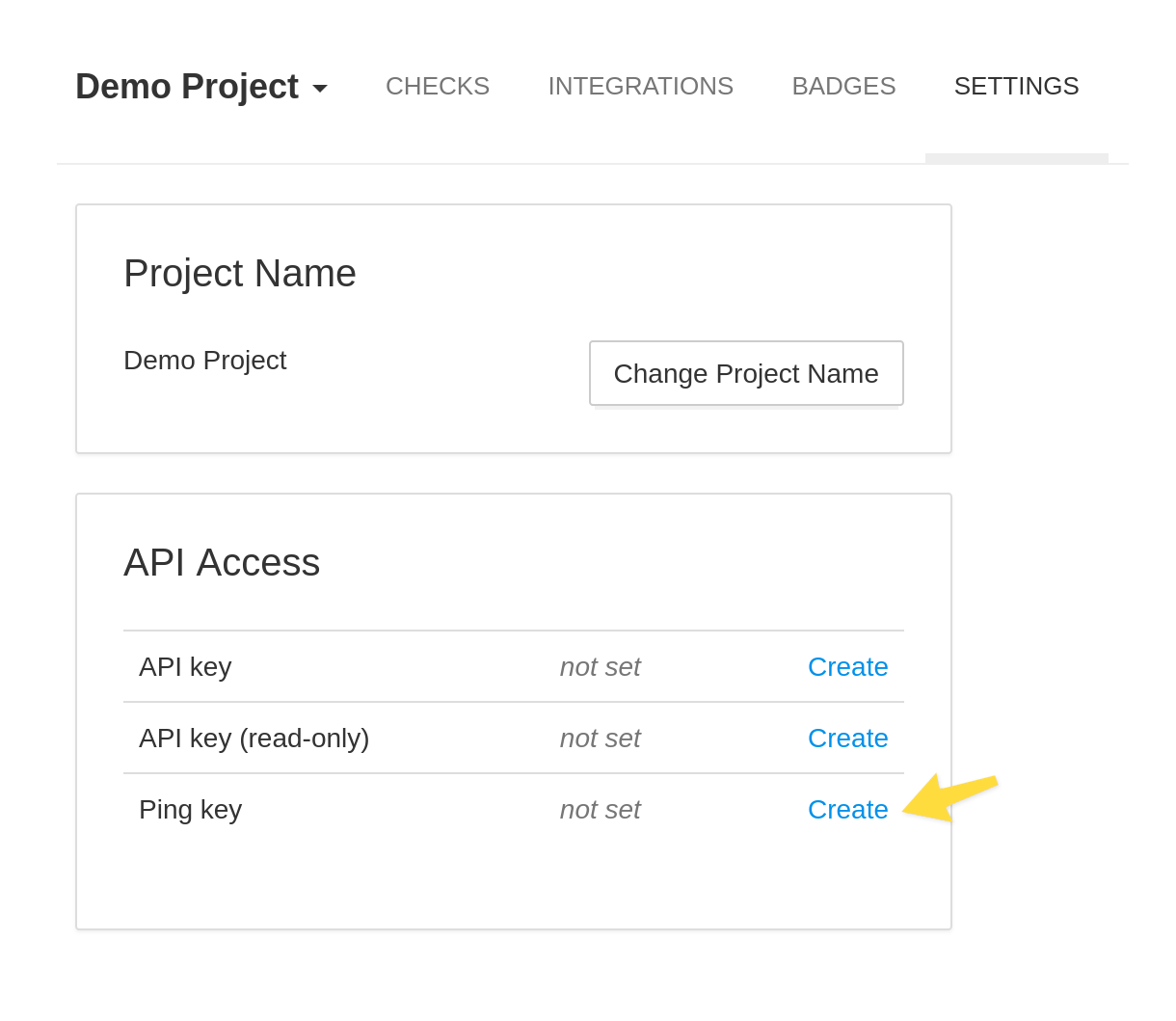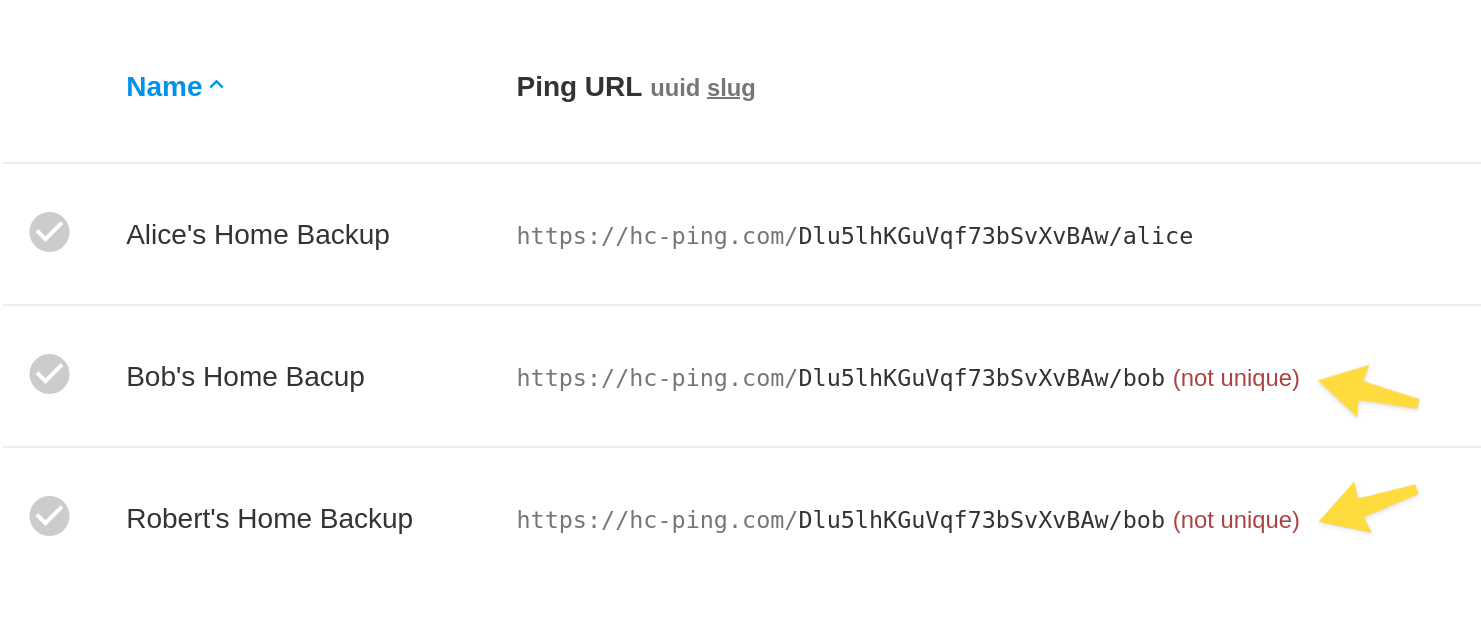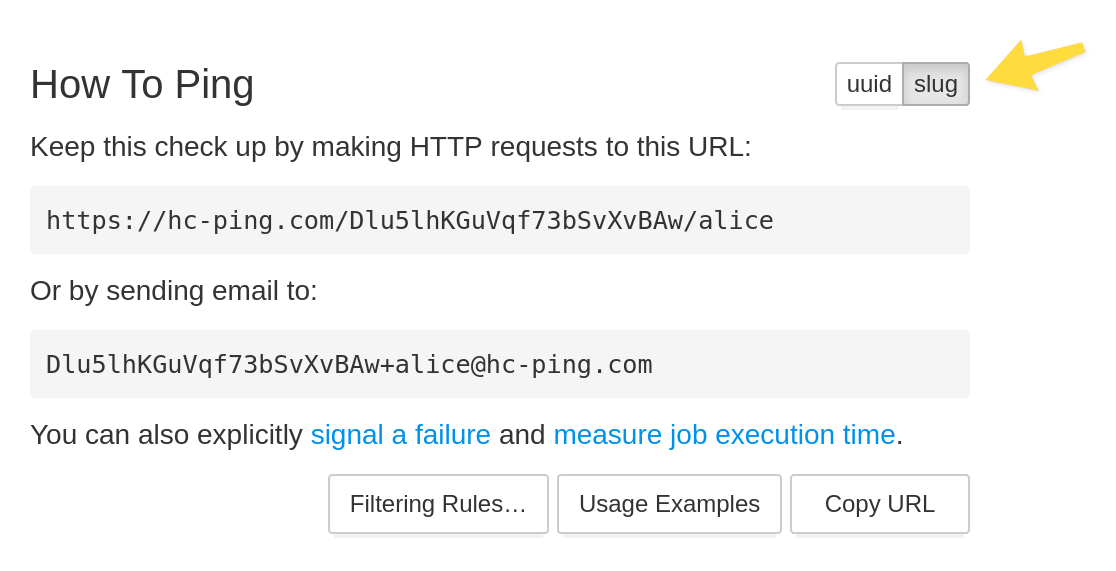Slug URLs
Healthchecks.io offers two different URL formats for sending ping HTTP requests: UUID and slug URLs.
A Quick Recap of UUID URLs
UUID-based ping URLs are the older and the default pinging URL format used in Healthchecks.io.
Each check in the system has its own unique and immutable UUID. To send a success signal
("ping"), clients make a request to https://hc-ping.com/ with the check’s UUID added at
the end. Example:
https://hc-ping.com/d1665499-e827-441f-bf13-8f15e8f4c0b9
To signal a start, a failure, or a particular exit status, and to log a diagnostic message, clients can add more bits after the UUID:
https://hc-ping.com/d1665499-e827-441f-bf13-8f15e8f4c0b9/start https://hc-ping.com/d1665499-e827-441f-bf13-8f15e8f4c0b9/fail https://hc-ping.com/d1665499-e827-441f-bf13-8f15e8f4c0b9/123 https://hc-ping.com/d1665499-e827-441f-bf13-8f15e8f4c0b9/log
This is conceptually simple and works well. UUID-based ping URLs require no additional authentication–the UUID value is the authentication, and the UUID address space is so vast nobody is going to find valid ping URLs by random guessing.
There are a few downsides of UUID-based ping URLs:
- UUIDs are not particularly human-friendly. Unless you are good at memorizing UUIDs, it is not easy to associate a ping URL with a check just by looking at it. But it is easy to make mistakes when copying and pasting UUIDs around.
- Each UUID is a secret. Therefore, if you have many things to monitor, you will need to manage many secrets.
Slug URLs
Slug URLs are an optional, alternative URL format introduced in 2021. In slug URLs, instead of using UUIDs, we use two variable components, a ping key and a slug:
https://hc-ping.com/<ping-key>/<slug>
Here's a concrete example:
https://hc-ping.com/fqOOd6-F4MMNuCEnzTU01w/db-backups
Slug URLs support start and failure signals the same way as UUID URLs do:
https://hc-ping.com/fqOOd6-F4MMNuCEnzTU01w/db-backups/start https://hc-ping.com/fqOOd6-F4MMNuCEnzTU01w/db-backups/fail https://hc-ping.com/fqOOd6-F4MMNuCEnzTU01w/db-backups/123 https://hc-ping.com/fqOOd6-F4MMNuCEnzTU01w/db-backups/log
All checks in a single project share the same ping key. The ping key is the only secret you must manage to ping any check in the project. You can look up or create the ping key in your project’s Settings screen, right next to your project’s API keys:

The slug part of the URL (db-backups) is chosen by the user (you). You can pick
descriptive, human-readable values. Unlike UUID, each check's slug is mutable;
you can update an existing check's slug after the check is created.
The allowed characters in the slug are the lowercase ASCII letters (a-z),
digits (0-9), underscore (_), and hyphen (-).
The security of slug URLs relies on the ping key. This means you can hardcode slug values in scripts, commit them to version control, or even share them publicly without worrying about unexpected ping requests from crawlers, content scanning bots and random curious individuals.
Compared to UUID URLs:
- You can pick descriptive, human-readable slug values. You can change an existing check's slug.
- You can monitor multiple processes using a single secret: the ping key.
- Slug URLs support the check auto-provisioning feature.
Duplicate Slug Values
Healthchecks.io does not force you to pick unique slug values. If several checks have the same slug, they will have the same slug-based ping URL. If you send an HTTP request to it, you will get an HTTP 409 response with the text “ambiguous slug” in the response body. The UUID-based ping URLs for these checks will, of course, still work.
The Healthchecks.io web interface will also warn you about any checks with the same slugs:

The UUID / Slug Selector
Healthchecks.io shows a "UUID / Slug" selector in the checks list:

And also in each check's details page:

The selector lets you choose the URL format for display in the web interface. It controls the display value only, and does not influence the operation of pinging API: Healthchecks.io will accept ping requests using either format, regardless of the selector value.